Growing up in California, I was no stranger to natural disasters. Fires and earthquakes were a regular occurrence, and I remember having earthquake drills in school as a child. It was a way of life – something we were taught to prepare for, but never quite got used to.
But all that changed when I moved to Miami Beach for two years and found myself face to face with a different kind of natural disaster: hurricanes. During orientation at the local hospital where I worked, I received a crash course in hurricane preparedness – a far cry from the earthquake drills of my childhood.
I’ll never forget the moment when, feeling a bit like a fish out of water, I raised my hand and asked a question that revealed just how clueless I was about hurricanes. “So is Team A whoever is on shift when it hits?” I inquired, only to be met with a kind but amused response from the instructor.
“Where are you from?” they asked. “California,” I replied sheepishly. And with a knowing smile, they explained that unlike earthquakes, hurricanes come with warnings – giving people time to prepare and respond accordingly.
In that moment, I realized just how sheltered my California upbringing had been when it came to natural disasters. But I also learned a valuable lesson about the importance of being informed and prepared, no matter where life takes you.
Natural Disasters
Natural disasters have a way of striking when we least expect them, leaving devastation in their wake and reminding us of the importance of being prepared – not just for ourselves, but for our furry family members as well.
In 2017 alone, we witnessed a series of catastrophic events that served as stark reminders of the power of nature: South Texas’ Hurricane Harvey, Ventura California’s Thomas Fire, Northern California’s devastating wildfires, and an alarming start to tornado season that left us reeling. (The Weather Channel)
But amidst the chaos and destruction, there is hope – hope born from the knowledge that with proper preparation and planning, we can minimize the impact of disasters on our loved ones, both human and furry.
That’s why May 12, 2018, is such an important day: National Animal Disaster Preparedness Day (NADPD). It’s a day dedicated to raising awareness about the importance of preparing our pets for disaster and ensuring that they have everything they need to stay safe and secure during times of crisis.
In honor of today and the countless families who have lost both human and furry loved ones to devastating disasters, I’m going to show you how to prepare your dog for disaster. But I haven’t forgotten about our other furry friends – I’ve also included free PDFs for cats, rabbits, and guinea pigs/hamsters/mice, with the option to request one for feathered friends as well.
So let’s come together as a community and take proactive steps to protect our beloved pets in the face of adversity. After all, when it comes to disaster preparedness, every member of the family – furry or otherwise – deserves a fighting chance.
California Wildfires-Fireman Saves Kitten
Hurricane Harvey-Rescuing Pets
Planning ahead is indeed crucial when it comes to protecting our loved ones – including our furry companions – from the potential impacts of natural disasters. Ready.gov is an invaluable resource for guiding families through the process of disaster preparedness, and I’m excited to share some tips on how to prepare your dog for a disaster:
-
Create a Pet Emergency Kit: Just like you would for your human family members, assemble a pet emergency kit that includes essentials such as food, water, medications, a first aid kit, and any necessary pet supplies (leash, collar, crate, etc.). Be sure to include comfort items like a favorite toy or blanket to help reduce stress during a crisis.
-
Identify Safe Spaces: Identify safe areas in your home where your dog can seek shelter during a disaster, such as a designated room or area away from windows and doors. Practice going to these safe spaces with your dog so they become familiar with them in case of an emergency.
-
Keep Identification Up-to-Date: Ensure that your dog’s identification tags are up-to-date with your current contact information, including a cell phone number. Consider microchipping your dog as an added layer of protection in case they become separated from you during a disaster.
-
Prepare for Evacuation: Have a plan in place for evacuating with your dog if necessary. Identify pet-friendly shelters or hotels along your evacuation route and make arrangements in advance. Keep a list of emergency contacts, including veterinarians and local animal shelters, handy in case you need assistance.
-
Practice Emergency Drills: Practice evacuation drills with your dog so they become accustomed to the process. Use treats and praise to reward them for following commands and remaining calm during drills. This will help ensure a smoother evacuation process in the event of a real emergency.
-
Stay Informed: Stay informed about potential disasters in your area by signing up for emergency alerts and monitoring local news and weather updates. Being aware of potential risks will allow you to take proactive steps to keep your dog safe.
By taking these steps to prepare your dog for a disaster, you can help ensure their safety and well-being during times of crisis. Remember, being prepared is key to protecting your entire family – furry members included – from the unexpected.
Now, let’s delve deeper into a couple of key areas related to disaster preparedness for dogs.
Planning Ahead
- Know what disasters might affect your area.
- Put a pet rescue decal on your window (DIY decal how to with free printable(s) below)
- Make a plan.
- Many shelters do not take pets. Have a list of places you can go: friends/family outside of your immediate area, pet-friendly hotels along your evacuation route, boarding facilities, vet offices and animal shelters willing to accept family pets.
- Develop a buddy system.
- Plan with your neighbors, friends or relatives to make sure someone can help if you are not able.
- Talk with your dog’s vet about emergency planning. If you are needing to find the right vet, I’ve got you covered here.
- Know where your dog likes to hide when they are afraid.
- Gather contact information for emergency animal treatment.
- Create a dog emergency kit.
- Be prepared. Know what you need to pack and be able to pack quickly. Reading our post Traveling with Your Dog can help. There is also a FREE checklist if you click the button at the end of this post.
A Note About our Dog Health Binder
I’ve mentioned our binders in “How to Choose a Dog Food” and have more information in our resource library (it’s free when you become our online friend (OF)). It has saved us on many emergency vet visits when traveling and should be a MUST have for ALL pet parents. Include health records, medication lists, registration records, the emergency vet list, list of lodging options and your family photo.
During an Emergency
- Keep your dog close. Running away and/or hiding is common when your dog is frightened.
- Call as soon as possible to make reservations at your predetermined lodging outside of your danger area.
- Keep your and your dog’s emergency kits close.
- Turn your window rescue decal (see below) to face inside the house. This ensures rescue workers are not looking for a dog you have taken with you.
Hill’s Disaster Relief Network
Sometimes best-laid plans are still not enough and Hills has found a way to help. They developed a disaster relief network. The first network of its kind and established by Hills in 2013. Hill’s Hills Pet Disaster Support delivers free food in response to disasters. To date, that includes 280,000 pounds to nearly 300 disaster relief organizations.
DIY Pet Rescue Window Decal
What you will need:
- Card Stock
(Yellow, Red, or Orange preferred)
- Self-Sealing Laminating Pouch
- A Single Hole Hand Punch
- Scissors or if you are type A like me about straight edges a Paper Trimmer
- Clear Suction Cup Hook
Step 1
Print the PDF download of your choice onto card stock paper. Click the link below each photo to download the decal(s) of your choice.
Rescue-Mouse-Hampster-Guinea Pig-Window-Decal
Step 2
Write the number of pet(s) you have in your home in the box.
Step 3
Laminate the printed decal. Of note, make sure your top and side front edges are in the sticky area otherwise you will need to find another way to keep the front side attached (as it only is sticky around the edges).
Step 4
Cut the edges using scissors or paper cutter.
Step 5
Use the single hole punch in the center or your laminated decal.
Step 6
Choose a prominent window at the front of the house and place the clear suction hook on the inside of the window. (Update-if you have toddlers in your home, place this hook MUCH higher!)
Step 7
Hang your decal on the hook. Of note, when you are away from your home and your pets are with you, please make sure to switch the decal so the blank side is facing out. This ensures rescue workers are not risking their lives to save a pet that is no longer present in your home.
Update
My childhood hometown, where I lived from 18 months old until 21, on and off again until my husband and I relocated in 2015 and my family still lived until November 8, 2018, is Paradise California. You may have heard of the Camp Fire. Just in case, Wikipedia describes it this way: “The Camp Fire was the deadliest and most destructive wildfire in California history to date.”
My family and their pets survived, their homes did not (see photos of two of the three homes I lived in growing up. The first picture is where my parents still lived at the time of the fire. Numerous friends pets, as well as people, were not as fortunate. The fire moved so quickly it was difficult for humans to escape but a window decal gives your pets a fighting chance. They can let the firefighters know to at least release the animal even it is going to have to fend for itself and find their own way out. My heart breaks for the lives, both furry and human, lost. Going home, well it no longer exists.
The Camp Fire stands as a stark reminder of the importance of disaster preparedness and the need to take proactive steps to protect ourselves and our loved ones, both human and furry, in the face of such catastrophic events. The window decal is a means of giving pets a fighting chance. It is a poignant reminder of the small but significant measures we can take to safeguard the lives of our animal companions during emergencies.

1933 Hillpark Lane, Paradise California one of my childhood homes and where my parents still lived until November 8, 2018
What is your favorite tip to prepare for an emergency?

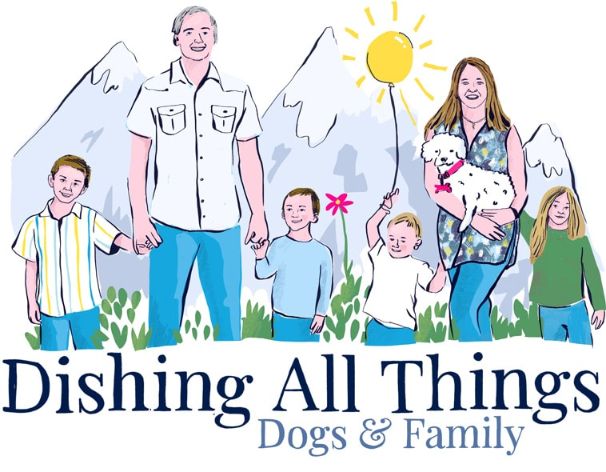
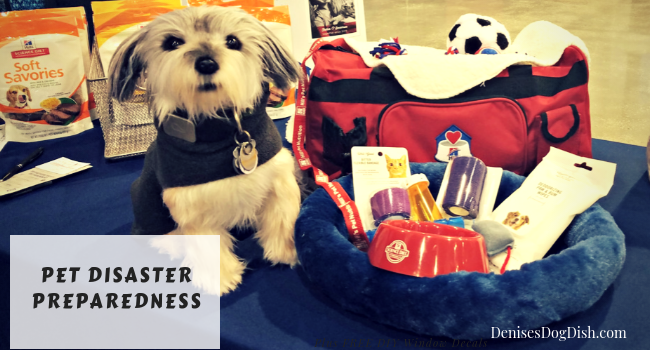

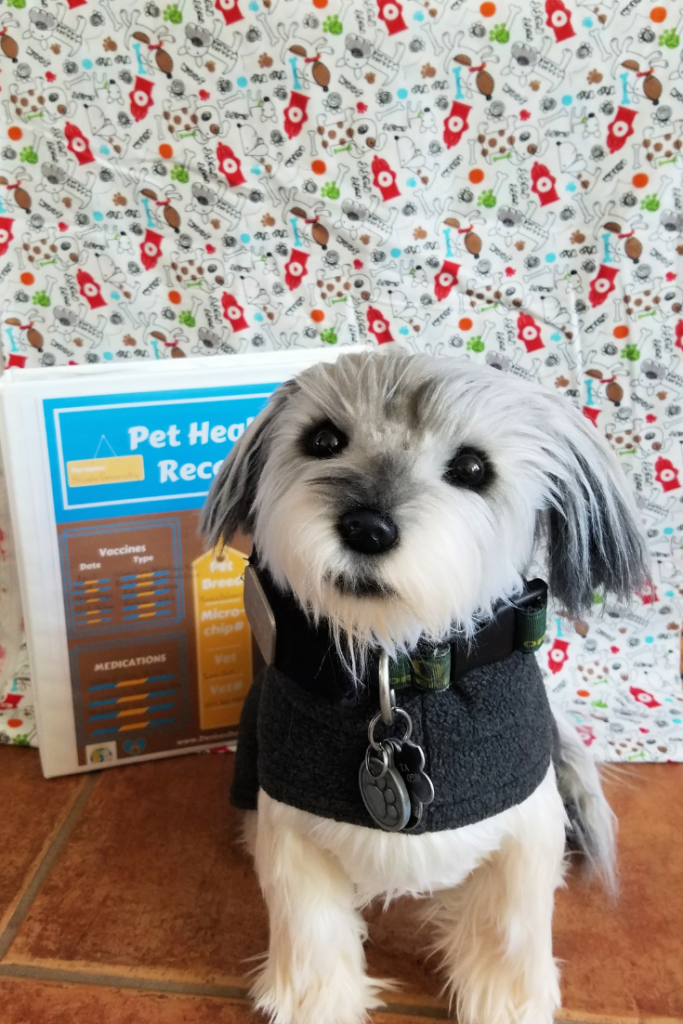

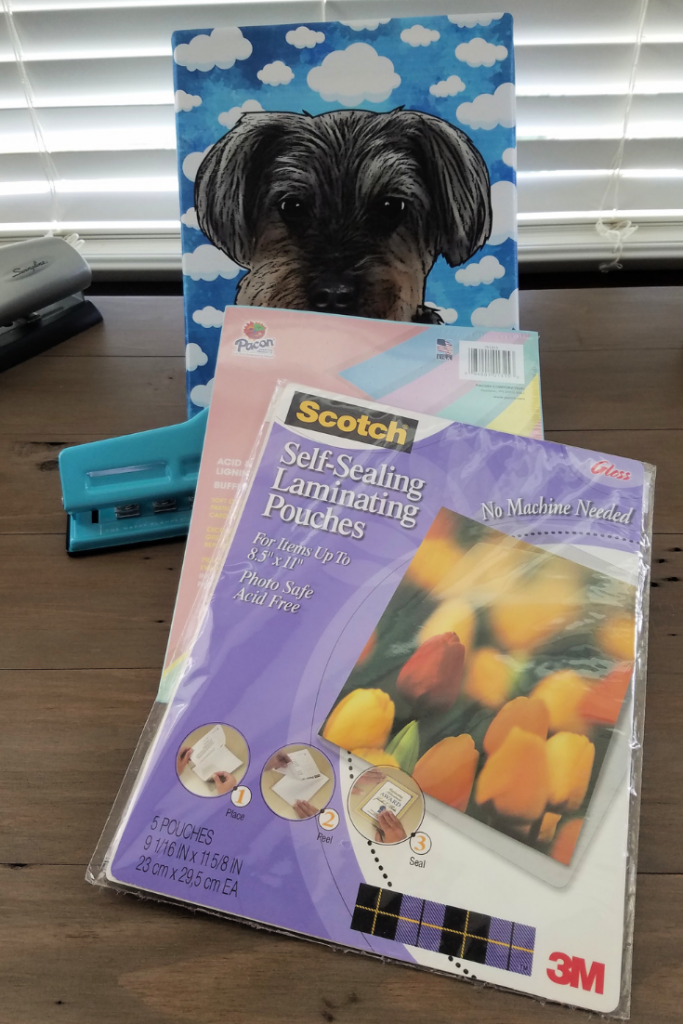
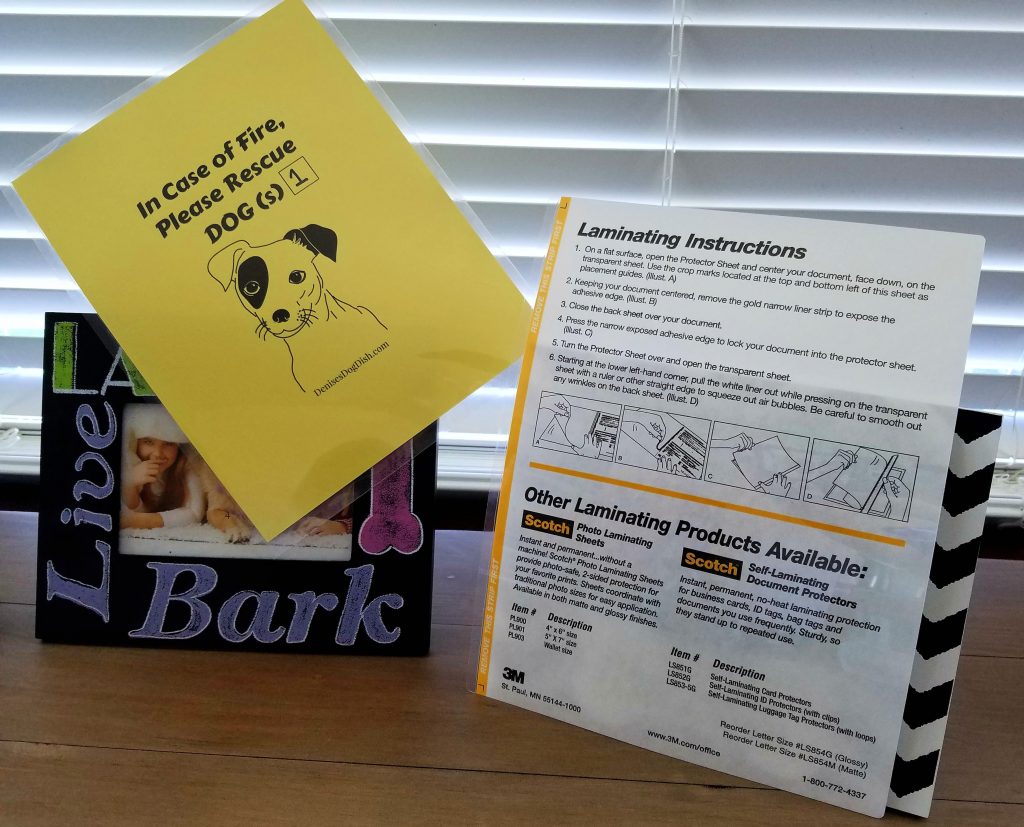
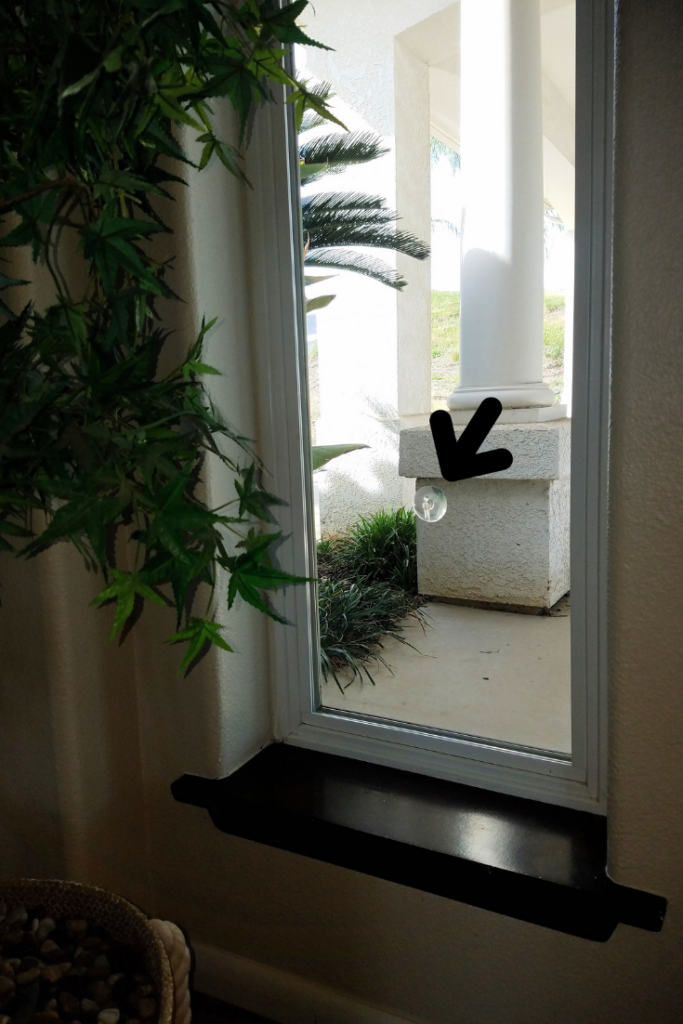
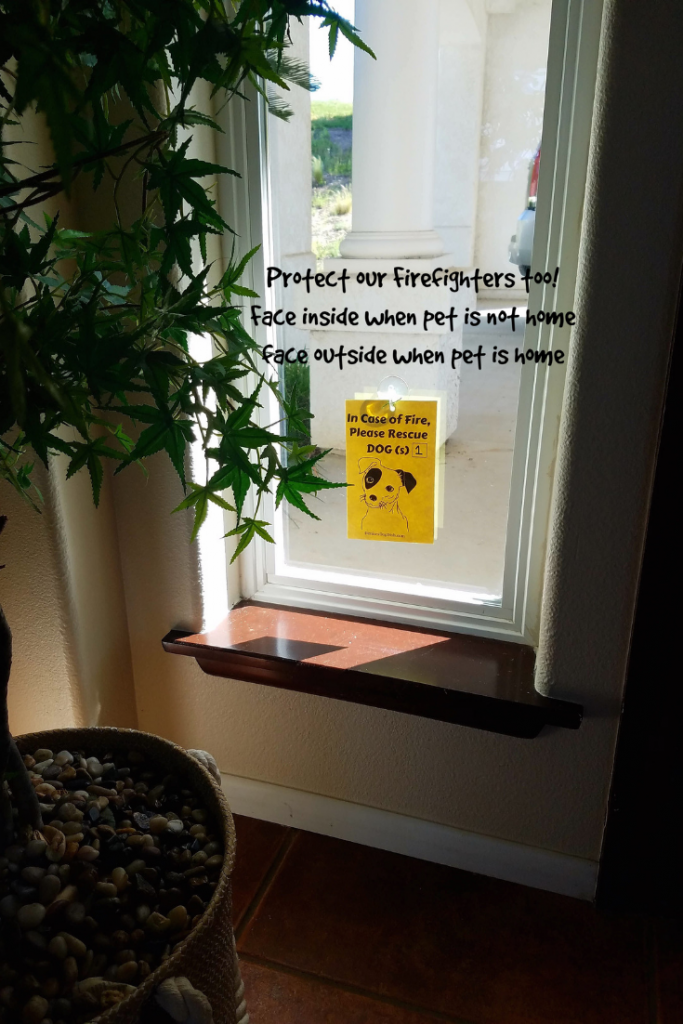

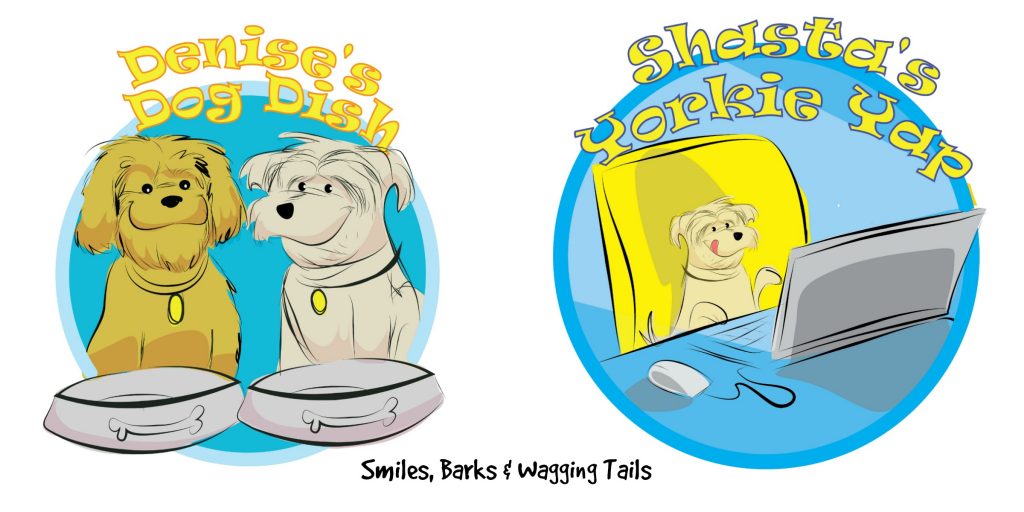
Smart tips – momma needs to do this!
I know how much she loves you and will keep you safe!! You’ll have to let her know your fav outfits so she can make sure to grab them in a rush. 🙂
When I was working downtown (30 min train ride) I was always so worried about something happening while I was away from home. I love the idea of creating a buddy system. We have that with our daughter and her friends’ parents, but really need to do that for our pets.
We don’t have earthquakes or hurricanes but we do have severe storms and tornados and winter storms. We do have emergency kits. Your health binder is a great idea. I admit, I don’t have this – all our pets records are in files, but not very organized. I’m adding this to my to do list!
If you procrastinate long enough I’ll have a DIY health binder coming soon… 🙂
I am loving this! YES yes yes! We all need to prep for disaster for the humans and absolutely the pets too! I think people forget about this sometimes. I love your infographics and the print outs! Just today my mother and I were saying we needed to put something on our front door for emergency crews too. One of my fears is that if we ever had an emergency our pets could accidentally be let out. Granted that is a different topic haha but your post got me thinking more about my prep kit. It’s time to update and I will be using your post here as a guideline! Sharing on social and sending my mother your link!
Thank you!
I am so glad it’ll be so useful to you immediately. I have been writing versions, in my head, for a while but everything finally came together. I have my sister (a former firefighter) to thank for the DIY idea (even though she didn’t know it). She saw my sticker several years ago and said, “I would hate to be the firefighter looking for your dog when it isn’t here”.
I guess I didn’t really post my reply, but I really appreciated this post in particular. I always leave out doors unlocked (oops guess I shouldn’t announce this, ha!) because I don’t want anyone in an emergency to have trouble getting in to rescue my dog – of course I’m sure they wouldn’t hesitate to knock down the door. Anyway, printed out the dog rescue one right away as my other two are very small.
Hi Denise, only dog mom will understand what you wrote thank for sharing this detailed information.
Jeevan Shetty
Awesome Article. I really appreciate and love to know that you are a dog lover. I was not a great lover of pets a few years back. But one day I gifted a golden retriever puppy to my wife and now we both are great dog lovers. Even I have started writing several blogs on dogs. I feel motivated when I see the person like you writing such great articles. Really impressive, thanks for sharing!
What a great post, Denise! Very thorough. It’s so important to be 100% prepared for an emergency evacuation and to include pets in your plan. Tweeted. I also tried to PIN several of your graphics/photos and it wasn’t working – the issue could be on my end but I wanted to mention it!
Love & Biscuits,
Dogs Luv Us and We Luv Them